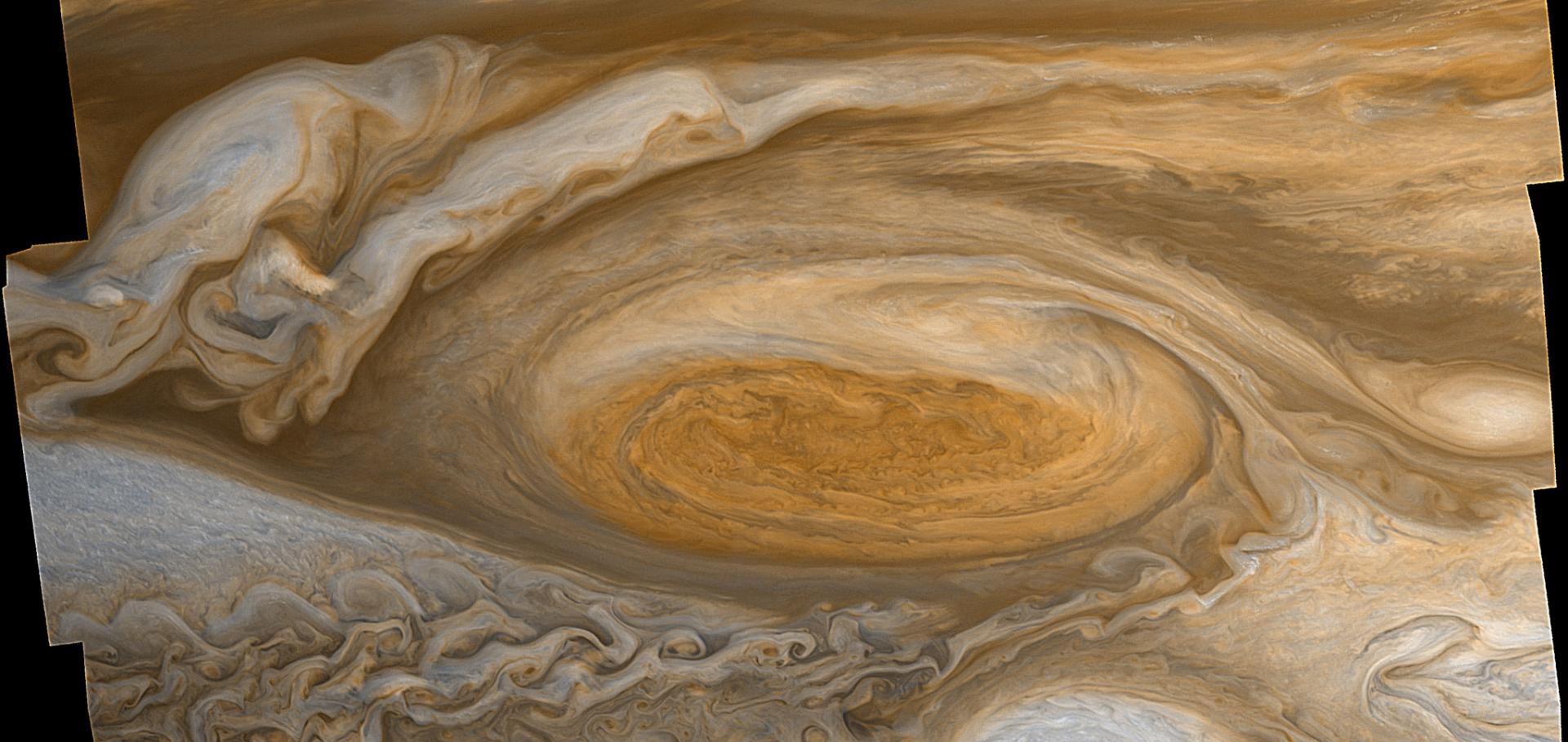Testing the limits of quasi-geostrophic theory: application to observed laboratory flows outside the quasi-geostrophic regime
JOURNAL OF FLUID MECHANICS 649 (2010) 187-203
Mapping potential vorticity dynamics on saturn: Zonal mean circulation from Cassini and Voyager data
Planetary and Space Science 57:14-15 (2009) 1682-1698
Abstract:
Maps of Ertel potential vorticity on isentropic surfaces (IPV) and quasi-geostrophic potential vorticity (QGPV) are well established in dynamical meteorology as powerful sources of insight into dynamical processes involving 'balanced' flow (i.e. geostrophic or similar). Here we derive maps of zonal mean IPV and QGPV in Saturn's upper troposphere and lower stratosphere by making use of a combination of velocity measurements, derived from the combined tracking of cloud features in images from the Voyager and Cassini missions, and thermal measurements from the Cassini Composite Infrared Spectrometer (CIRS) instrument. IPV and QGPV are mapped and compared for the entire globe between latitudes 89{ring operator} S - 82{ring operator} N. As on Jupiter, profiles of zonally averaged PV show evidence for a step-like "stair-case" pattern suggestive of local PV homogenisation, separated by strong PV gradients in association with eastward jets. The northward gradient of PV (IPV or QGPV) is found to change sign in several places in each hemisphere, however, even when baroclinic contributions are taken into account. The stability criterion with respect to Arnol'd's second stability theorem may be violated near the peaks of westward jets. Visible, near-IR and thermal-IR Cassini observations have shown that these regions exhibit many prominent, large-scale eddies and waves, e.g. including 'storm alley'. This suggests the possibility that at least some of these features originate from instabilities of the background zonal flow. © 2009 Elsevier Ltd.Saturn atmospheric structure and dynamics
Chapter in Saturn from Cassini-Huygens, Springer Verlag (2009) 113-159
Abstract:
Saturn inhabits a dynamical regime of rapidly rotating, internally heated atmospheres similar to Jupiter. Zonal winds have remained fairly steady since the time of Voyager except in the equatorial zone and slightly stronger winds occur at deeper levels. Eddies supply energy to the jets at a rate somewhat less than on Jupiter and mix potential vorticity near westward jets. Convective clouds exist preferentially in cyclonic shear regions as on Jupiter but also near jets, including major outbreaks near 35°S associated with Saturn electrostatic discharges, and in sporadic giant equatorial storms perhaps generated from frequent events at depth. The implied meridional circulation at and below the visible cloud tops consists of upwelling (downwelling) at cyclonic (anti-cyclonic) shear latitudes. Thermal winds decay upward above the clouds, implying a reversal of the circulation there. Warm-core vortices with associated cyclonic circulations exist at both poles, including surrounding thick high clouds at the south pole. Disequilibrium gas concentrations in the tropical upper troposphere imply rising motion there. The radiative-convective boundary and tropopause occur at higher pressure in the southern (summer) hemisphere due to greater penetration of solar heating there. A temperature "knee" of warm air below the tropopause, perhaps due to haze heating, is stronger in the summer hemisphere as well. Saturn's south polar stratosphere is warmer than predicted by radiative models and enhanced in ethane, suggesting subsidence-driven adiabatic warming there. Recent modeling advances suggest that shallow weather layer theories of jet pumping may be viable if water condensation is the source of energy input driving the flow, and that deep convective cylinder models with a sufficiently large tangent cylinder radius can reproduce observed flow features as well.The mars climate database (version 4.3)
SAE Technical Papers (2009)
Abstract:
The Mars Climate Database (MCD) is a database of meteorological fields derived from General Circulation Model (GCM) numerical simulations of the Martian atmosphere and validated using available observational data. The MCD is freely distributed and intended to be useful and used in the framework of engineering applications as well as in the context of scientific studies which require accurate knowledge of the state of the Martian atmosphere. Current applications include entry descent and landing (EDL) studies for future missions (ExoMars, MSL), investigations of some specific Martian issues (via coupling of the MCD with homemade codes), analysis of observations (Earth-based as well as with various instruments onboard Mars Express and Mars Reconnaissance Orbiter),. Copyright © 2009 SAE International.Transient teleconnection event at the onset of a planet-encircling dust storm on Mars
Annales Geophysicae 27:9 (2009) 3663-3676


